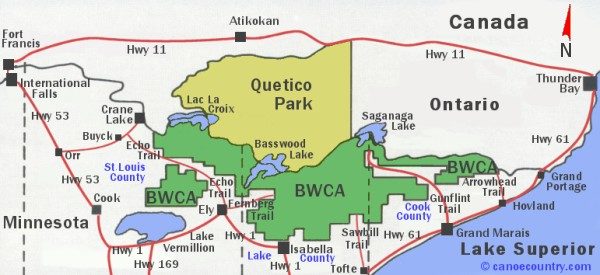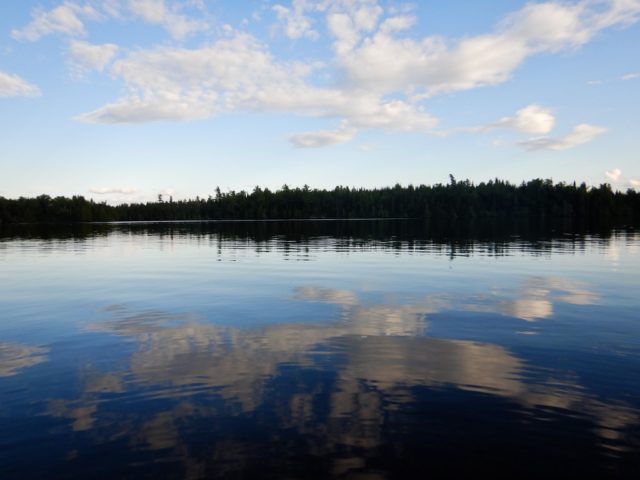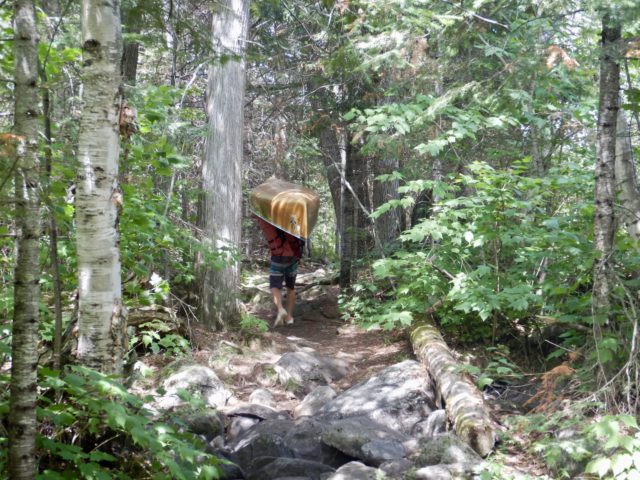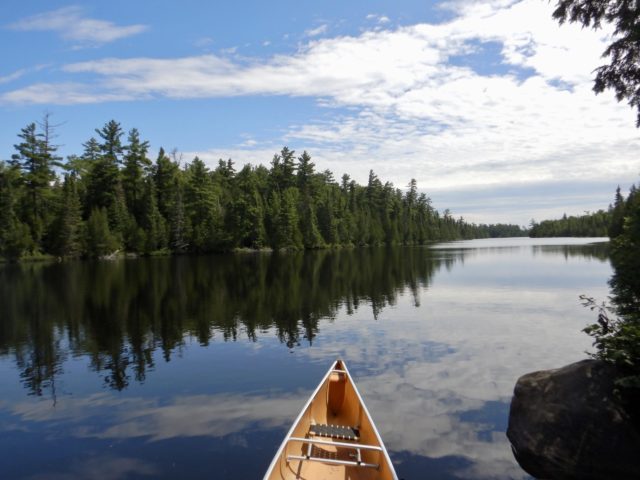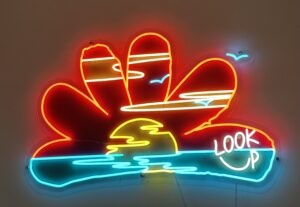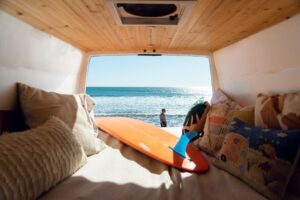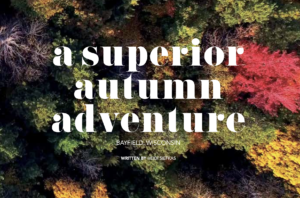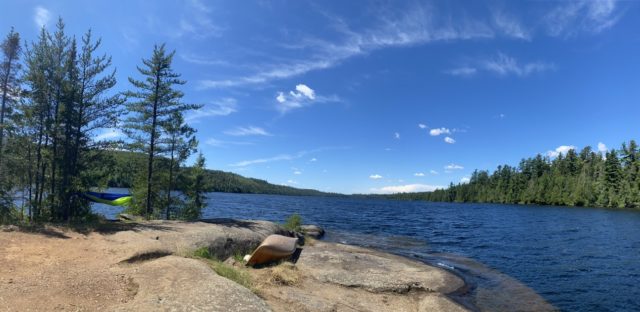
The Boundary Waters Canoe Area (BWCA) is a pristine wilderness of over a million acres in Northern Minnesota. And, the best way to explore the Boundary Waters is in the name, by canoe. So, when in the Land of 10,000 Lakes, you must paddle. Like many, if you’re looking for an outdoor adventure to recharge your batteries and escape reality, look no further. To make it easier for you, I have compiled a dozen Boundary Waters Canoe Area travel tips for you and several pictures from my five-day, four-night adventure to entice you to get planning.
BWCA Travel Tips
1. Choose Your Route & Get Your Permit
There are countless routes you can take to get away from it all in the BWCA. Most adventurers select either Grand Marais or Ely as a starting off point. However, in order to limit the number of people in the BWCA, you and your group of a maximum of nine people must obtain a permit for your entry lake. Permits are limited. Be prepared to be flexible with routes, entry lake, and your dates. For example, I canoed and camped during the week instead of over a weekend. You can learn more about permits and acquire them here.
2. Opt to DIY or Use an Outfitter
If you live within driving distance of the BWCA and have a canoe, by all means, you can bring your own gear. However, for those that aren’t from Minnesota or Wisconsin, you will need to find an outfitter to rent your canoe, paddles, life jackets, and even camping gear. As I said, there are two main BWCA bases with numerous outfitters that provide from soup to nuts or better said from canoe to even camping stoves, tents, and food. Because I wanted to canoe the Gunflint Area, I selected an outfitter, Rockwood Lodge, that helped me acquire my permit, a waterproof map, a bunkhouse the night prior to embarking on the adventure, and a canoe. It was super convenient to be located right on a lake with no need to drive to a put-in point. Rockwood Lodge is located on Popular Lake, which is close to various permitted lakes (ex. Lake Lizz and Meed). If you want to canoe day trip and skip the camping, you can rent a cabin from Rockwood Lodge as your base. See other outfitters in the BWCA on TripOutside.
3. Pack Light and in the Right Bags
Someone once told me that packing light is the secret to happy travel and thus happy campers. Well in the BWCA, it is essential to pack light. Although you can pack a lot in a canoe, in the Boundary Waters, you must portage. No one likes to portage, but it is the only way to get from one lake to another. You unload all of your gear and carry the empty canoe anywhere from fifteen to hundreds of rods (1 rod=16.5 feet) to the next lake. Then, you backtrack and carry all the gear, hopefully in one trip. On any given day, you may portage several times. Our maximum number of portages in a day was four.
Regardless of what the weather is like, rain or shine, your gear is going to get wet. The best bet is to pack it drybags with backpack straps. There are many drybags without straps, but don’t be stupid; get the backpack straps. You need to carry multiple bags at each portage: one on your back and one on your front with a paddle or paddles in hand.
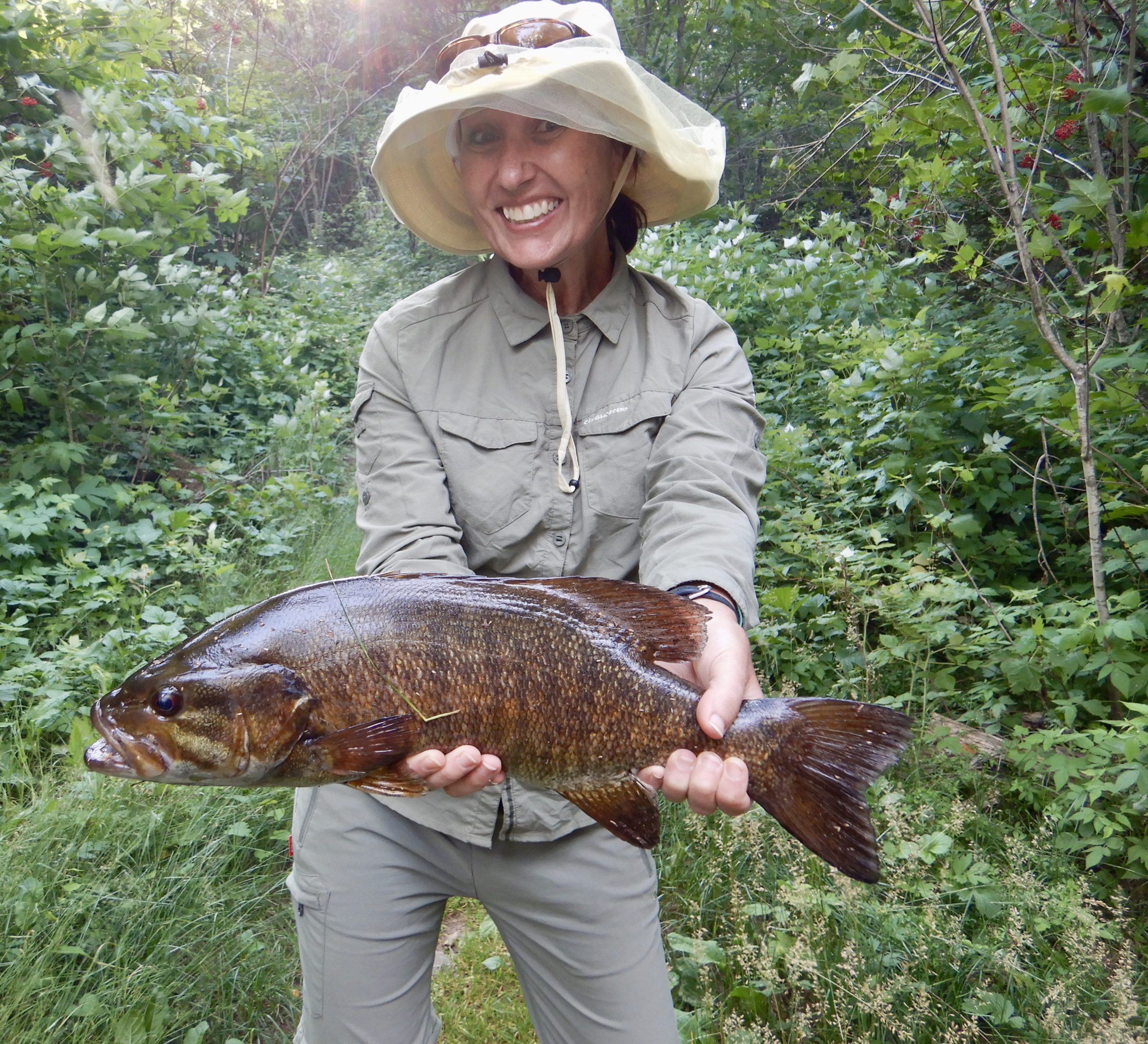
4. Get a Fishing License, Pole, and Bait
Probably one of the most popular activities while in the BWCA is fishing. You can fish while paddling by dropping the line from the back of the canoe or from your campsite. In order to fish in Minnesota, you must obtain a license. You can purchase online with the State of Minnesota or at Fleet Farm. Many of the outfitters can rent/sell you bait, fishing poles and lures. We had our one and only catch off of Meed Lake with a three-pound bass (see above image). We used a lure with a bobber and a worm. Remember a good filet or Swiss-army knife to clean the fish!
5. Don’t Forget the Bug Repellent (Spray and Long Pants)
Minnesota is known for its mosquitoes (aka the unofficial state bird). Knowing this in advance as well as being well-liked by every mosquito I’ve ever met; I highly recommend bringing along a bug repellent lotion and/or spray with picaridin. Additionally, clothing that covers your limbs and head is optimal. I wore an insect deterrent outfit, treated with bug repellent, and a mosquito net hat (see above image). The mosquitoes, flies, and other insects are the worst during the portages as well as at sundown.
6. Bring a Water Filter
You will not have a problem finding freshwater in the BWCA. However, you will need to filter, boil, or treat the water in order for it to be potable. We packed two Sawyer filters as well as Camelbacks. The filter would do 16 oz at a time; so, I filled the Camelbacks for drinking and cooking our dehydrated meals (ex. ramon, instant mashed potatoes, instant rice, and quick pasta) every morning and evening.
7. Plan on Using a Camping Stove + Fuel
Although all of the camping sites have firepits, you need to bring a camping stove and fuel. Sometimes because of a very dry season, the Superior National Forest prohibits fires. Fortunately, we arrived just after one of these bands had been lifted. However, it is challenging to make a fire for each meal. A small portable camping stove heats up coffee, scrambled eggs, soup, and more in a matter of minutes regardless of the weather.
8. Wear Your Portage Shoes
The portages in the BWCA can be short and easy, but that is a rarity. At all portages, you will find slippery rocks, mud, steep inclines, and/or declines. It is best to have a pair of water shoes or sandals with good grips. Portages aren’t for flip flops. I witnessed some people portaging with hiking boots, but you want shoes that will dry at camp. Be good to your feet by packing portage shoes and camp shoes.
9. Be Prepared with Rain Gear + Weather Radio
Weather is unpredictable just about anywhere you go. However, rain gear (both jacket and pants) is of great importance in the BWCA. Firstly, if it rains, you stay dry and so does your gear if you packed it in a drybag. Secondly, if it gets cold, your rain gear provides you warmth. Thirdly, your gear is another layer of bug protection. If you want to know the weather report, since your phone/wi-fi won’t work, you can buy a weather radio and turn-in to the WB channel twenty-four-seven. FYI: The only FM station that came in was a country-western station from Thunder Bay, Canada. This is the song that made me smile, “Stronger Beer.”
10. Be a Boy Scout with Fire Essentials: Fire-starter & Lighters
A campfire goes hand in hand with camping. The dancing flames provide the backdrop for fishermen’s tales, scary stories, and jokes from prior adventures. Just like any campfire, you need to forage kindling and the driest wood you can find. Since rain can be an issue, having fire-starter packets/nuggets are a great idea, plus two lighters (one as the back-up). Always extinguish your fire and stir the embers well. Smokey the Bear thanks you!
11. Don’t Be a Bear Fool – Bring Rope and Bear Bag/Box/Barrel
The Boundary Waters is wilderness; so, expect birds, bugs, and other wildlife, including moose, wolves, and bears. In order to keep your food safe, you must store it in a bear-proof container out of reach of bears. Typically, most hang a separate food bag/box/barrel from a rope in a tree for this purpose. Don’t be a fool and leave food in your tent. You may be surprised when a bear gives you a wake-up call for a snack.
12. Prepare for Injuries – Pack a First Aid Kit + EPIRB
Setting out on any adventure you hope that everything will go according to plan with no injuries, but accidents happen. A good first aid kit with bandages, wraps for sprains, and over-the-counter medicines for common ailments is a must-pack. Both of us on the trip injured our feet with either blisters, scrapes, or cuts. Those portages are brutal. Pack good supportive closed-toe shoes with grips.
In case of something dire and need for evacuation, you can purchase an EPIRB (Emergency Position Indicating Radio Beacon). This small device runs on a battery and satellite. By powering up, positioning the antenna, and pressing for help, you will activate the local emergency authorities for rescue. Although we did not need to use it, it is a tool to have with on any remote hike, camp, or kayak.
Would I do the BWCA again?
Although I was born and raised in Wisconsin, I had never canoed the Boundary Waters. I have traveled far and wide to do similar outdoor adventures in Colombia, Japan, and Hawaii. It seemed silly that I hadn’t done the BWCA, which is so close to where I grew up. After experiencing the beauty and solitude of the BWCA, I would do it again in a heartbeat. Next time, I will follow my Boundary Waters Canoe Area travel tips, but I would go for a longer time. I thoroughly enjoyed being disconnected from technology and the news in order to reconnect with nature and myself.
If you have comments or questions about the travel tips or our trip, please comment below. If you have done the BWCA before, I’d love to hear your advice and stories of your experiences.
As always, here’s to looking up from wherever you are!

